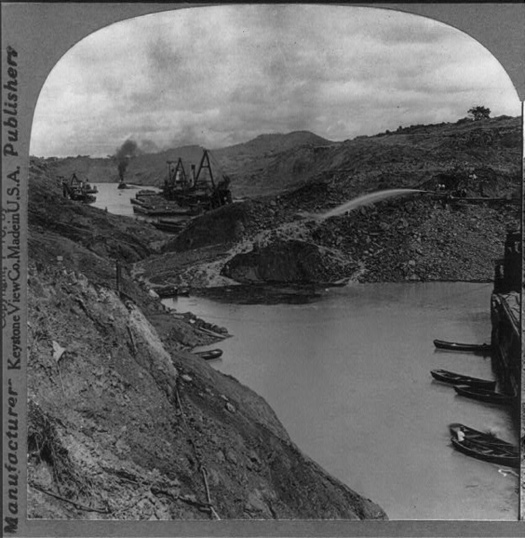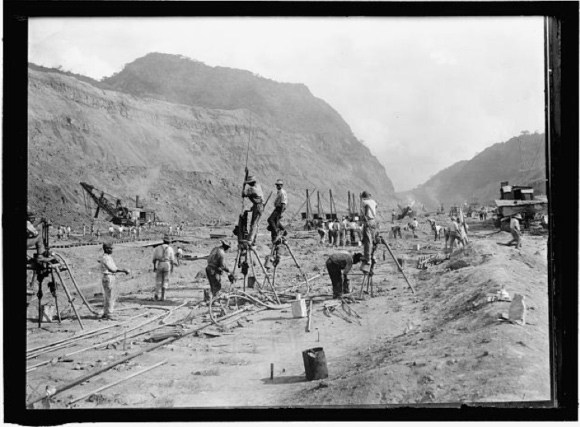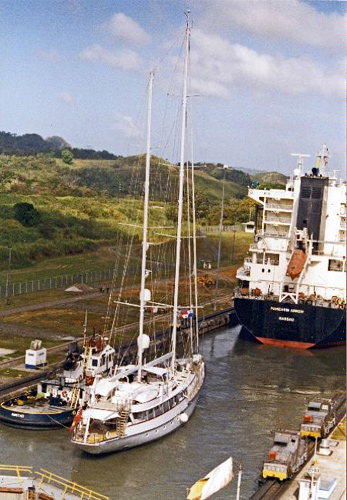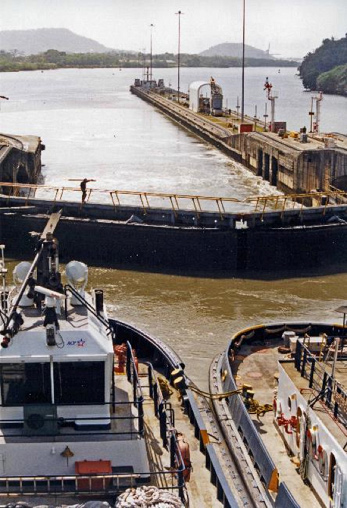
Source: Landslide, Library of Congress

Source: Landslide, Library of Congress
Landslides were one of the dangers of constructing the Panama Canal. This is a photo of a landslide of ten million yards of earth entirely blocking the canal.
How do you think American engineers were able to overcome problems like landslides during the canal's construction?

Source: Panama Canal, Harris & Ewing 03147, Library of Congress
This photo shows the various tasks that construction workers had on the construction of the Panama Canal.
Think about construction sites that you have seen. Does this site look like any that you have seen? What is different? What is similar?
In 1907, President Roosevelt decided to put the project in the hands of the U.S. Army with Major George Washington Goethals in charge. Very little new construction had been completed, but in terms of preparation, much was accomplished. Goethals divided the project into three divisions: Atlantic, Central, and Pacific.
![]() Click on the circles to learn more about the three divisions.
Click on the circles to learn more about the three divisions.
Work in the three divisions occurred simultaneously until May 20, 1913, when steam shovels made a passage through the Culebra Cut at the level of the canal bottom. Just four months later, dry excavation ended on September 10, 1913, and on January 7, 1914, the Alexandre La Valley, an old French crane boat, became the first ship to make a complete transit of the Panama Canal.
These photos illustrate how Panama Canal functions today:

Source: B1pm14, Central Intelligence Agency
Today, the Panama Canal accommodates various sizes of ships.

Source: B1pm15, Central Intelligence Agency
![]() Watch the time lapsed video of a journey through the Panama Canal. Notice how the locks operate, the size of Gatun Lake, and the various vessels that use the canal.
Watch the time lapsed video of a journey through the Panama Canal. Notice how the locks operate, the size of Gatun Lake, and the various vessels that use the canal.
Source: The Panama Canal Time Lapsed in HD, Sideytime, YouTube
Based on what you have learned in this lesson, answer the following questions in your notes.